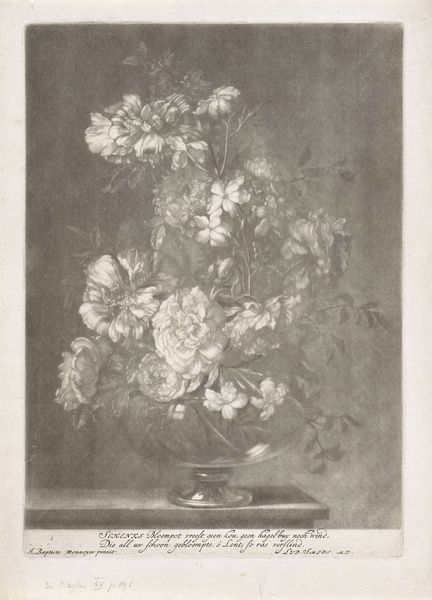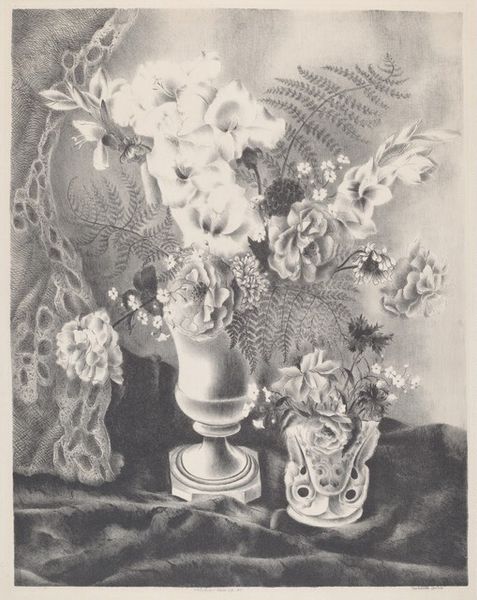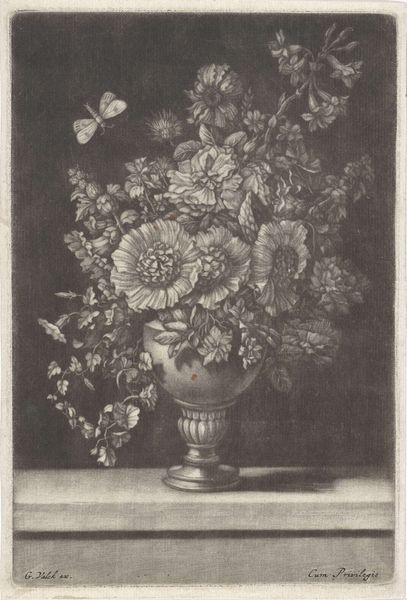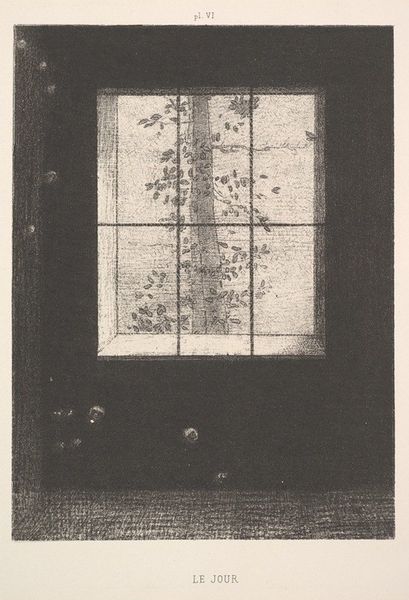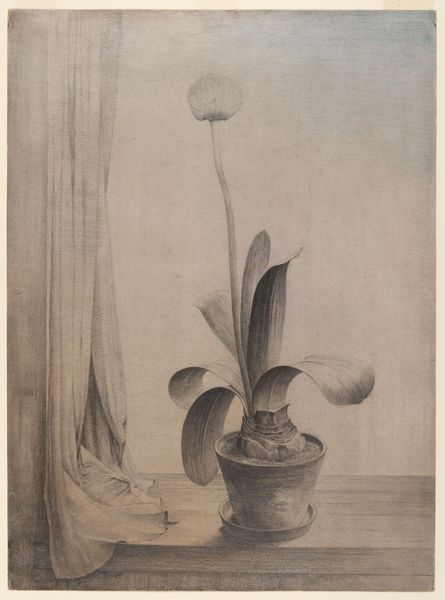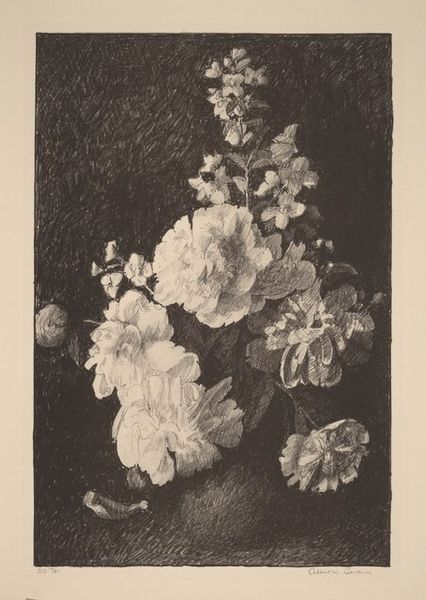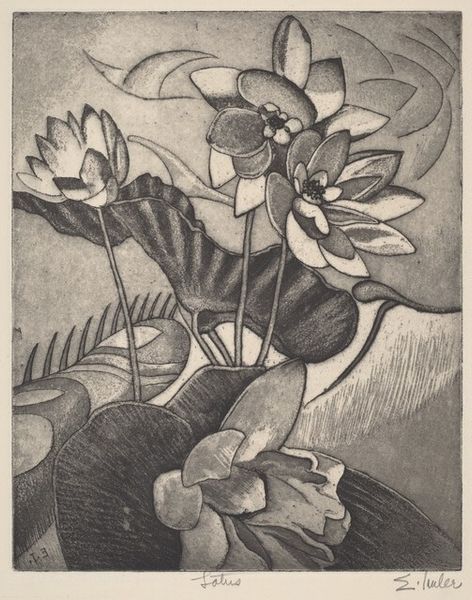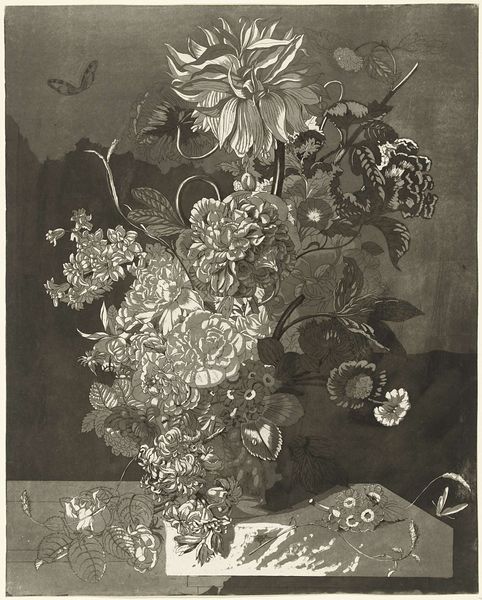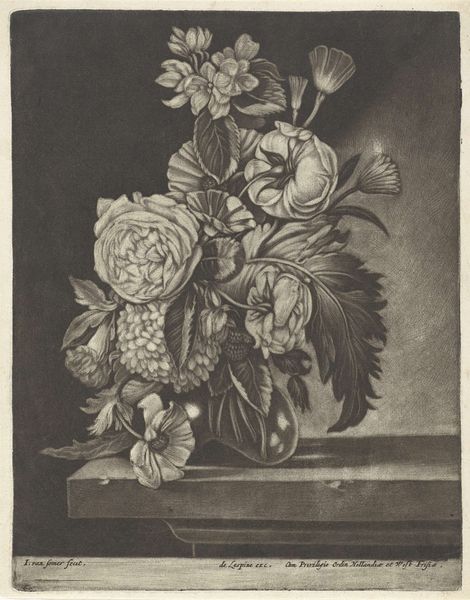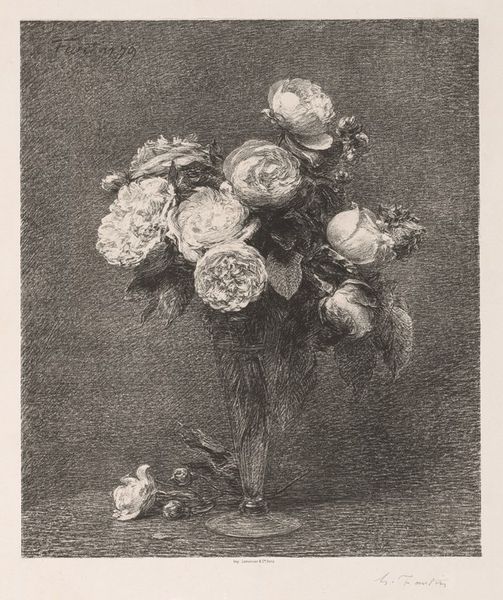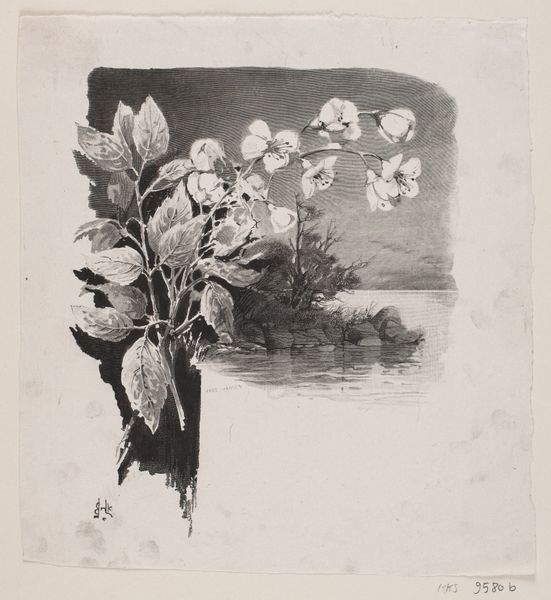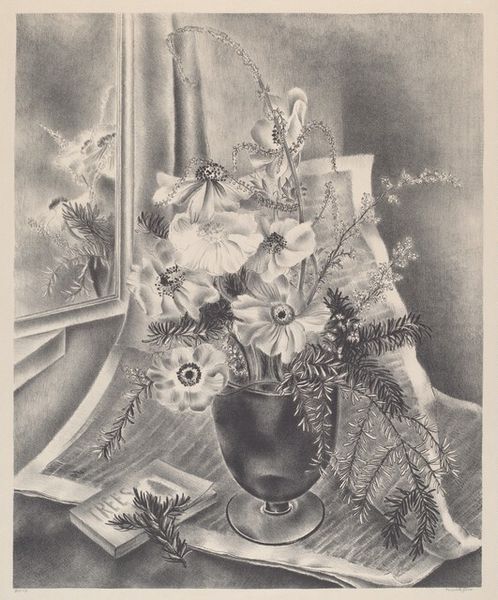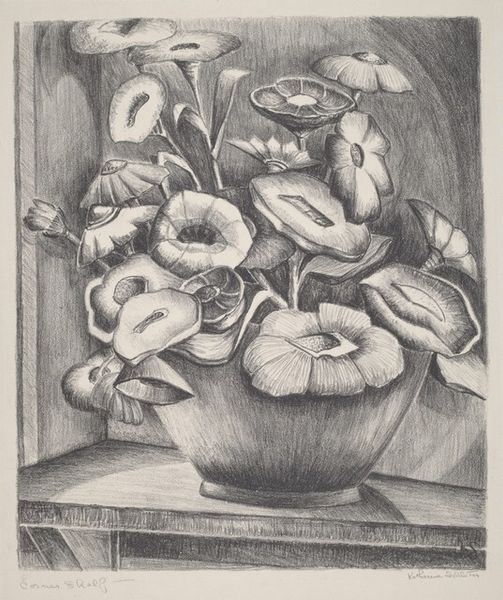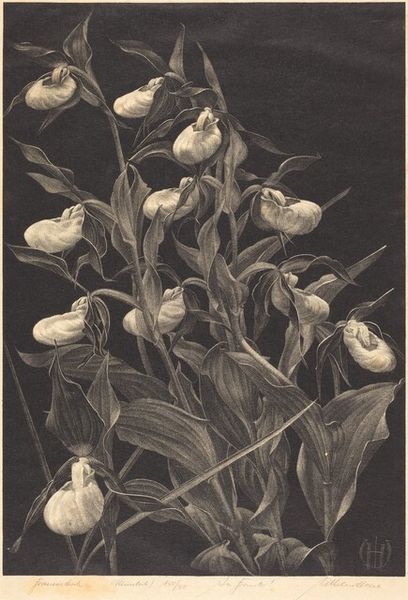
drawing, print, graphite
#
drawing
# print
#
graphite
#
cityscape
#
modernism
Dimensions: image: 420 x 373 mm sheet: 463 x 412 mm
Copyright: National Gallery of Art: CC0 1.0
Curator: This work from approximately 1935 to 1943 is called "Milkweed and Skyscrapers," made with graphite on paper by Todros Geller. What strikes you initially about it? Editor: Melancholy. The tonal range is narrow, mostly grays, adding to the quiet stillness, which is only intensified by the single sprig of milkweed. Curator: Yes, there’s a certain duality there. Geller sets up an immediate contrast between the fragility of the milkweed—a potent symbol of resilience despite its delicate appearance—and the backdrop of the dense urban cityscape. Editor: Those towering skyscrapers become almost menacing looming behind this common weed. Do you see it as a conscious social commentary? It's hard not to in the context of that era, with anxieties around industrialization. Curator: Geller, as a prominent member of the Chicago art scene and an immigrant himself, frequently used his art to address social issues, reflecting on urban life and the immigrant experience. The milkweed then transcends its literal form. It's a symbol. Perhaps of hope or survival against imposing structures? The architecture itself represents the power structures of society. Editor: It certainly challenges a romanticized notion of progress. The flower seems to push against the geometric hardness of the buildings, asserting its own quiet beauty. Looking at it through that lens of the immigrant experience—does the flower then perhaps represent the individuals adapting to new and difficult environment, striving despite everything? Curator: Precisely. The composition emphasizes this push-pull. It reminds me a bit of other artists, like Charles Sheeler who took similar subjects—industry, cityscapes—yet approached them through hard lines and unpopulated severity. Editor: It's more humanist, warmer, here though, because the soft textures almost plead for empathy in what otherwise might be perceived as cold structures of progress. Curator: This glimpse through the window, this framing, directs us towards not only what has been built, but also towards what persists—both in the physical and spiritual realms. Editor: So Geller asks us not to ignore what gets overshadowed by modernity's ambitions, but to see it as enduring and meaningful. I appreciate how his delicate treatment creates that contrast. Curator: Geller gives voice, literally and figuratively, to a different kind of beauty and persistence. The city doesn’t erase it; rather, milkweed stakes its claim against it. Editor: A somber yet thought-provoking perspective. Thank you.
Comments
No comments
Be the first to comment and join the conversation on the ultimate creative platform.
